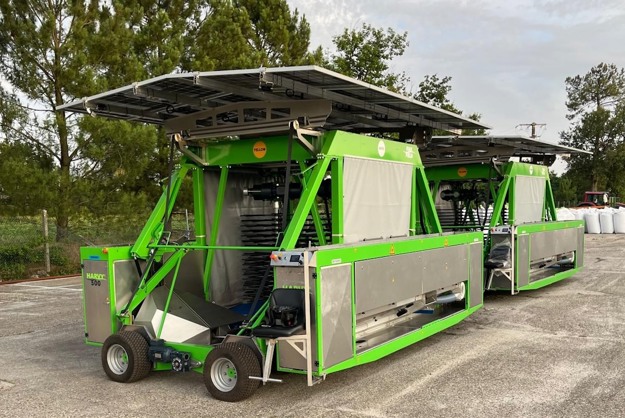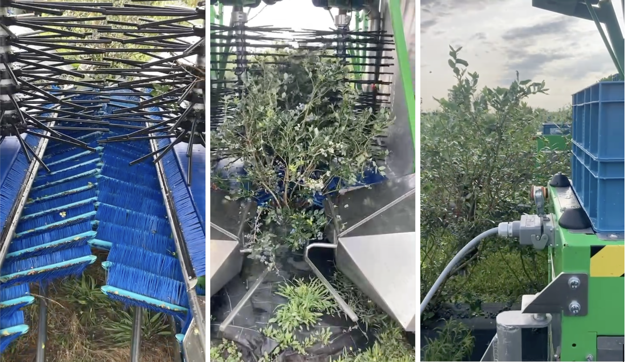With the blueberry harvest in full swing, Planasa - a key player specializing in breeding new varieties of red fruit - invited growers and companies in the industry to witness the mechanical harvesting of this delicate little berry: "We have 38 hectares of 10-year-old orchards. Our terroir is well suited to growing blueberries, given its acidic soils. Our crops are grown in the open ground on mulched mounds without hail and frost protection (when necessary, we use candles to protect ourselves from frost). Last year, we experimented for the first time with a harvesting machine specifically for fresh produce: the Dutch Fine Field machine. Mechanized harvesting aims to reduce labour costs, which are quite high in the case of blueberries. This year, we brought in two machines to do our harvesting", reports Frédéric Faillières, EMEA Head of Northern European Business at Planasa.

Supporting customers in all areas of innovation
With its main mission being to develop new varieties, innovation is at the heart of Planasa's DNA. The company is committed to supporting growers from the moment they plant to the moment they harvest, through genetic, technical, and technological innovation. "We put our experience at the service of our customers, who buy our varieties. We want to support farmers in everything relating to innovation. Our breeders are developing more productive varieties with fewer inputs and less water, in line with farmers' desire to reduce soil amendments. Mechanized harvesting is another aspect of innovation, helping to reduce the very high labor costs involved in blueberry growing. We also have a role to play in publicizing technological innovation, sharing our experience with other bodies such as the Blueberry Growers Associations. That's why we're developing workshops on mechanical harvesting".

A real "technological breakthrough"
The new machine is surprising and already seems to have many advantages: "We were the first in France to test it and we're still participating in its development. This machine is suitable for areas of 10-12 hectares and more. It's efficient and innovative, thanks to its all-electric operation via solar panels on its roof. This means you can work autonomously all day long. The fact that there is no combustion engine makes it a lightweight machine that needs less energy and can be moved around more easily. It's a far cry from the ideology of a heavy, noisy, cumbersome machine; this tool represents a real technological breakthrough. The producers and partners we meet are always amazed at this tool, which has been specially designed for the fresh produce market rather than the industrial market. I would say that it's a light machine for a light fruit".
A few more challenges to overcome
Despite the fairly conclusive initial results, there are still a few challenges ahead for users: "It will be important to have varieties with clustered ripening. Also, for the machine to be able to harvest efficiently, growers will need to adapt the morphology of their orchards to the tool. The machine does not harvest well in the middle of the row. The size of the orchard will therefore have to be adapted to reduce the amount of fruit in the middle row. On the other hand, it responds very well to falling branches".
For more information:
Frédéric Faillières
Planasa
Tel. : 05 57 71 56 00
[email protected]









